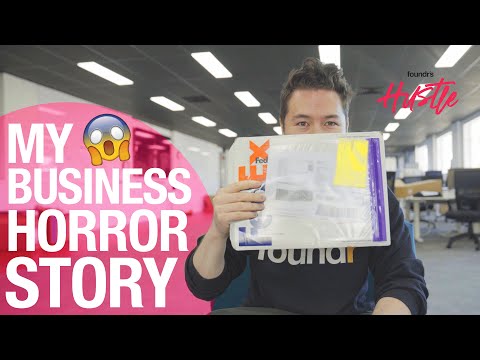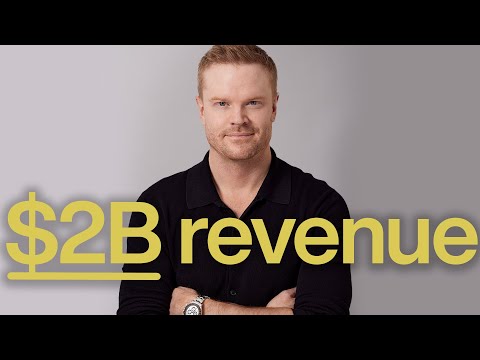Imagine you have a true million-dollar idea. You know, a real world-changer. What would you do? Throw it on Shopify and start selling ASAP? Bury all evidence in the woods behind your house? You might want to protect your...
Imagine you have a true million-dollar idea. You know, a real world-changer. What would you do? Throw it on Shopify and start selling ASAP? Bury all evidence in the woods behind your house? You might want to protect your intellectual property by getting a US patent.
The patent application process can be intimidating in its complications. To help you navigate the patent process, we’ll cover everything you need to know about how to patent an idea, including how patents work, why you should patent an idea, and the drawbacks of the patent process. Finally, we’ll walk you through the 5 steps to secure your patent.
Table of Contents
The Cons of Applying for a Patent
Before You Begin: Hire a Specialist
How Much Does It Cost to Patent an Idea?
Can You Patent an Idea?
To patent an idea, you must complete the US patent application process, which includes proving to a registered patent agent that your idea is innovative or different enough that it deserves patent rights.
On the other hand, if you only have an idea and it doesn’t meet some key criteria in terms of its use and originality, then you won’t be able to get a patent. The USPTO wants people who have some unique idea to protect to get a patent, not amateurs who want to make a quick buck off a half-baked concept.
If you’re still in the “idea” phase., your best bet is to validate your idea and ensure that there’s a market for your business. Once you’ve developed your idea into something more concrete, you may be ready for a patent.
Don’t Skip: Incorporating Your Business – The Why and How of It
Why You Need a Patent
Patents protect your ideas as intellectual property and prevent your competitors from being able to take your idea and use it for profit. Patents are awarded for novel innovations (there are 4 categories of patentable material, which we’ll cover later) and designed to ensure that innovators can market their innovations and inventions without being copied.
Why do you need a patent? Consider the case of Elisha Gray, the inventor of an apparatus that could transmit speech electrically—the telephone. When Gray’s lawyer got to the patent office, he found that the very same day a man named Alexander Graham Bell—who’d eventually found AT&T on the back of his handy invention—had patented the same idea.
Apply for a patent early and avoid repeating Gray’s mistake. Doing so can protect your future business, make it easier to one day sell, and even make you ongoing revenue through licensing.

The Cons of Applying for a Patent
There are some drawbacks to applying for a patent. The patent process can be complex, technical, and tedious. The costs can be high (tens of thousands), and the process can take years.
Depending on how unique your invention is, you may or may not need a patent. You might, for example, find that branding and excellent customer service provide a stronger return on investment than filing a utility patent.
In some cases, filing a patent can actually increase your risk of competition rather than reducing it. In the beauty industry, brands shy away from securing patents for products like anti-aging face creams. They would be required to disclose the exact formula of the product in order to secure the patent, and most companies see this as a greater risk than the potential reward.
Ultimately, it’s a decision that you will have to make based on your industry and invention or product design to determine the costs and benefits.
Alternatives to Patenting an Idea
If you’re not ready to go through the patent process yet and want short-term protections, here are some alternatives to patenting an idea:
Nondisclosure or confidentiality agreement Trademarks Trade secrets
What Is a Patent?
Patents are government-granted exclusive rights that a company or individual has over a product. They let you profit from and manage the way your product is used, marketed, and sold, but only for a specific period of time—often 20 years.
After the patent period expires, the protection ends, and the invention belongs to the “public domain,” which means anyone can use the invention as they see fit without worrying about patent infringement.
What Patents Do
Patents protect the intellectual property of your idea, giving you immunity over competitors who may want to profit from it as well. When a competitor violates your intellectual property, you can enforce the appropriate use of the patent.
You Can License Patents
The owner of a patent can license the patent to third parties. The owner can also sell the rights to the invention to a third party, making it the new owner of the patent with the same benefits the original inventor had.
Patent vs Copyright vs Trademark
Patents, copyrights, and trademarks are all legal protections for different forms of intellectual property and different uses. A patent protects an idea. A trademark refers to a name, logo, or design that distinguishes a certain business from another. Copyright protects original works of authorship, like literary, dramatic, musical, and artistic works.
If your company has a unique process with a unique name that you want to protect, you can trademark its name so no one can copy it. A good example of a trademark would be if we wanted to protect the name of our courses, or if you wanted to protect the name of your company.
Copyrights, meanwhile, act as a patent for the arts. If you want to protect your software code, then copyright could be a good idea. Otherwise, if you have a marketable product idea, a patent is your only choice.
https://www.youtube.com/watch?v=amrB Sn-y4cs&t=5s
US vs. International Patents
While the principles just explained are all pretty much the same in all countries, each one has its own patent laws, which can vary depending on the product, what can qualify for a patent, and the way a patent is enforced.
To simplify matters, we’ll focus this article on the patent-filing process for the United States. At the end of this article, you will see some resources for other countries.
US patents are awarded by the “United States Patent and Trademark Office” (USPTO). The USPTO’s goal is to “grant patents for the protection of inventions and to register trademarks. It serves the interests of inventors and businesses with respect to their inventions and corporate products, and service identifications.”
The 4 US Patent Types
There are 4 different types of US patents. To receive an issued patent, your idea must qualify as one of the following.
1. Utility Patent
Utility patents may be granted to anyone who invents or discovers a process, product, machine, “composition of matter,” or any new and useful improvement thereof.
2. Design Patent
A design patent may be granted to anyone who invents a new, original, and ornamental design for an article of manufacture.
3. Plant Patent
A plant patent may be granted to anyone who invents or discovers and asexually reproduces any distinct and new plant variety.
4. Software Patent
A software patent may be granted to anyone who invents a piece of software
In this guide, we’ll walk you through the patent-filing process for utility patents. If you’re an ecommerce entrepreneur who wants to develop a new product, then this is the patent to file.
How to File an International Patent
This guide is limited in scope to US patents. Patent law in other countries varies wildly. To help you navigate the process, here are some resources for other countries:
Australia Canada India United KingdomBefore You Begin: Hire a Specialist
The patent process is quite complicated, and to complete the final step, you need a lawyer. It’s advisable that you consider hiring a specialist to help you through your utility patent application. The entire patent filing process can overextend most people, and crucially, a US lawyer needs to file your patent application.
Even if you are a lawyer, unless you’re experienced with patents, you will have a hard time following every procedure. As Michael Cohen, principal attorney at the Los Angeles-based firm Cohen IP Law, says, “The truly best [sic] way to increase the odds of approval is by hiring an experienced patent attorney to prepare and oversee the entire process of the patent application.”
There are hundreds of patent law experts in every country in the world. Before you start working on your patent filing procedure, start researching in your area for a patent lawyer (or firm) who can help you. Be sure to ask for some references. You will want to speak with other people who have gone through your process to see how that firm helped them file their patent.
Read more: Your Guide to Product Packaging Design and Strategy
How to Patent an Idea: Step-by-Step Utility Patent Instructions
It takes an average of 3 years to get a utility patent from the beginning to the end of the patent. To secure a patent, you must complete the patent filing process, what is also called “patent prosecution.” The USPTO does offer expediting services for additional fees and if certain requirements are met, which can dramatically reduce the time period to about one year.
Here’s what to expect from the patent process:
The initial preparation of the patent application could take weeks or even months depending upon the complexity, who is drafting it, and whether the inventor can provide sufficient information to adequately disclose the invention. After it is prepared it is then filed with the United States Patent and Trademark Office (USPTO). The actual filing is quick and typically done electronically, and you will immediately receive a patent serial number which means the invention is “patent pending.” Your application will be received by a patent examiner. This step typically takes a year or more.Once it is reviewed, the examiner routinely rejects the application in what is called an “office action.” A response needs to be made by the applicant or attorney. Otherwise, the application will become abandoned. It’s common to receive a second or third rejection (bringing the total process to around 3 years).
With this basic overview of the patent filing process, let’s go through the actual steps you’ll need to take to get a patent in the United States.
Step 1: Do a Patent Search
The first step towards getting a patent is to search the United States Patent and Trademark Office’s patent database to find similar ideas that have already been patented. On their homepage, hover over the “Patents” button and click on “PatFT.”
You can search the database to find past and existing patents. Under “Term 1,” add a term related to your product.
The results will likely bring many results. It’s best you try multiple different terms until you get close to your idea. Since there are many results in there, and many won’t be related to your product, you may need help from an expert to help you research your space. In the meantime, you can open up existing patents, analyzing the descriptions, and most importantly, the images that show the product itself.
As you carry on your research, take note of the similarities and differences between your product idea and other patents. Most likely, you will find inventions similar to yours. If that’s the case, you will have to come up with a good explanation for why your invention is better than, or at least different, from the ones that you found.
Step 2: Choose Your Patent-Filing Process
The patent-filing process varies according to whether you’re filing for a provisional patent application (PPA) or a regular patent application (RPA).
A provisional patent application allows you to claim “patent pending” status for the invention. On its own, such status isn’t as effective as having a real patent behind your idea, but the main benefit is that it requires much less work and money than an RPA. What’s more, the status helps you build credibility over your product.
The Benefits of a Regular Patent Application
In most cases, you will be best served by putting all your energy towards completing a solid regular patent application. Michael Feigin, a patent attorney from New Jersey-based Feigin & Fridman, strongly recommends this approach.
“Filing for a PPA sounds like a cost saving to file a provisional patent application, but it’s usually not because it means you’re filing twice. The first time, you’ll be filing something less than complete, only to pay your attorney to do it a second time the right way. You could just file one patent application which is full and complete at the outset.
What’s more, filing a provisional tends to show a lack of direction or seriousness. There are limited circumstances where they’re useful (e.g. you want to get something filed before you have to make a public disclosure and there isn’t much time) but I generally do not recommend them.”
The Benefits of a Provisional Patent Application
A regular patent application, on the other hand, comes with a barrage of filing requirements, which I will explain in Step 5. Some experts recommend starting with a provisional patent application while you work on your regular patent application. Stephen Kay, who has patented over 20 ideas, recommends this because:
Provisional patent applications are cheaper to file. You protect your idea for 12 months. You can test the idea in the market. You will have time to prepare your documents and improve your “pitch” to the USPTO.To file for a provisional patent application, you need to:
Pay the patent fee, which ranges from $65 for “micro-entities” to $130 for small entities to $260 for large companies (more information on these categories here). Provide a detailed description of the invention. Explain how to use the invention/product. Provide an informal drawing.Step 3: Make Sure Your Patent Idea Is Eligible
As excited as you may be about your idea, only a few types actually qualify for a patent.
The patent statute 35 USC 101 tells us that a patent can be given to any “new and useful process, machine, manufacture, or composition of matter, or any new and useful improvement thereof is eligible for patent protection.”
That means, your idea must be:
Useful Novel Non-obviousUseful
According to US law, “Useful refers to the condition that the subject matter has a useful purpose and also includes operativeness, that is, a machine which will not operate to perform the intended purpose would not be called useful, and therefore would not be granted a patent. ”
If your idea can’t prove to be useful, whether that means it makes your customer’s life easier, faster, cheaper, or brings any type of tangible result, you can’t patent it.
Novel
Novel basically means no one has ever patented before. As the statute goes:
” An invention cannot be patented if:
The claimed invention was patented, described in a printed publication, or in public use, on sale, or otherwise available to the public before the effective filing date of the claimed invention” or The claimed invention was described in a patent issued or in an application for patent published or deemed published , in which the patent or application, as the case may be, names another inventor and was effectively filed before the effective filing date of the claimed invention. “If your idea has existed before or has been patented, you can’t patent it. For example, you couldn’t patent a cappuccino or a frappuccino because, in the former case, they’ve existed for a long time, and in the latter case, because they already exist and have been patented .
Non-Obvious
Non-obvious means that it can’t be “an oral presentation at a scientific meeting, a demonstration at a trade show, a lecture or speech, a statement made on a radio talk show, a YouTube video, or a website or other online material .”
video, or a website or other online material .”
That means you can patent anything that’s real—a blog post or a Powerpoint presentation that mentions your idea can’t be patented. As a rule of thumb, the more useful, novel, and non-obvious your idea is, the higher the likelihood of being patentable.
Step 4: Submit the Patent Application
A complete regular patent application (RPA) should contain the elements listed below:
A patent application form The appropriate patent fees An application data sheet (see 37 CFR § 1.76) The product’s specifications Drawings (when necessary) An executed oath or declaration (more information in here)Basically, you want to describe your invention and highlight its advantages with the most amount of detail you can. You want to explain how your idea fills a market need.
As you can see, that includes gathering and submitting a lot of documentation, so be sure to meticulously track your progress and save any drawings, specs, modifications, ideas, etc., and gather them up to strengthen your case.
Step 5: Wait for the Patent
After you file your application, do not expect a quick response from the USPTO. It can take a year or longer before you hear back, especially if there are other inventions similar to yours.
When you do receive a response, it most likely won’t be an approval. A common reason for denial will be that your idea has too much in common with previous inventions. Maybe they will consider it’s not as useful nor novel or that you didn’t describe it with enough detail.
Whatever the case, when you get a denial, your attorney will have to work with you to address the issue at hand and resubmit the patent a second (or third) time.

How Much Does It Cost to Patent an Idea?
The patent filing fees can range between $75 for “micro-entities,” which I mentioned before, to $10,000 for certain submissions. To that, you need to add:
Patent search fees Research fees Examination Post-allowances feesA detailed USPTO’s fees list can be found here. What’s more, you need to include your attorney’s fees, which can quickly rise to the tens of thousands or more.
Overall, if you have a one-member corporation or one with few people in it, you can expect to pay the smaller spectrum of the fees, which can go up to $300. But if you add all the other costs I’ve just mentioned, the total costs can go up to $5,000 or more.
It’s hard to say beforehand what those costs will be; it’s best you talk to people who have patented ideas already or talk with a patent attorney so they can give you a better estimation. Given these costs, an entrepreneur may wonder whether it makes sense to pay for such an expensive procedure. Cohen says,
“The ROI is not a one size fits all answer. In some cases, depending upon the industry and the invention, the ROI of the patent may be more or less than in others. For example, with most startup companies, a patent application will be necessary not only for future enforcement reasons, but also as a prerequisite for most investors in their evaluation of the value of the invention. At the end of the day, the decision to bear the costs of the patent should be seriously taken into consideration before you decide to start the filing process.”
How to Enforce Your Patent
If you have found someone is using your product-or the idea behind it-without your consent, you can start with a cease-and-desist letter. If the person who’s violating your patent doesn’t stop, you will have to open a patent infringement case. Because patent infringement isn’t a crime, you will have to start a civil lawsuit in a federal civil court.
You would be the “plaintiff,” and the infringer would be the “defendant.” As a plaintiff in a patent case, you will hire a patent litigator to represent you. Your patent lawyer won’t be able to help you as they only work on submitting, not enforcing.
Just like your patent submission, a patent infringement case can be lengthy and expensive. The good news is that you can make your money back from the money invested in creating and patenting your product.
Keep Learning: Business Trademarks 101 – Registering Names, Logos, and Phrases
Why Go Through the Patent Process?
If you believe the licensing of your idea is worth the money, or if your customer research has shown you people desperately need your product, filing a patent could be a good idea.
On the other hand, if you’re getting the patent to show off or get some social proof behind your brand, it’s probably not the best decision.
Are you thinking about filing a patent and starting a business? Explore our free training series for an all-access pass to everything you need to start and scale your business from scratch.
The post How to Patent an Idea: A Step-by-Step Guide appeared first on Foundr.



